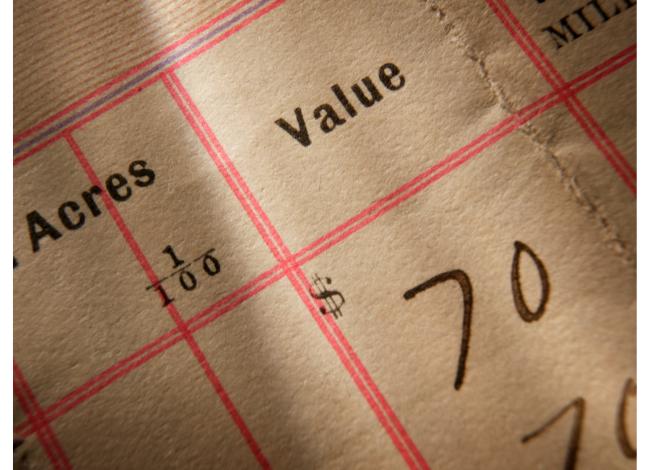The terms ‘style’ investing and ‘growth versus value’ are often bandied about the financial media but for many of us what does this jargon mean, and should we really care?
Essentially, ‘value’ investment approaches target companies whose share price is cheap relative to certain metrics such as their book value (assets minus liabilities), their earnings or the dividend they pay out. Consequently, value stocks are among those with the highest dividend yields.
Examples of so-called ‘value’ sectors can include banks, oil, mining, utility and industrial companies. They tend to be well established and mature businesses.
Meanwhile, ‘growth’ stocks may be comparatively younger companies that derive their value from the rate at which they are expected to grow their earnings in the future. Generally, these companies pay limited dividends as they are busy reinvesting their profits in growing their businesses.
Growth stocks are commonly found in the technology sector with companies like the ‘FAANGs’ (Facebook, Apple, Amazon, Netflix and Google) being very prominent examples in the past decade.
However, to make things a little trickier, other cyclical areas such as financial services, travel or the automobile sector may also contain ‘growth’ stocks, but generally the ‘cyclical’ and ‘value’ segments of the market overlap substantially.
Story so far…
In the wake of the Global Financial Crisis back in 2007-08 US technology companies were among those that made a resurgence, having previously been out of favour since the dot.com boom. This coincided with an overall trend for ‘growth’ companies, which saw more value-orientated funds and companies struggle.

The continued dominance of ‘growth’ had already been questioned when the pandemic took hold in 2020. But the quick action by central banks to adopt easy monetary and fiscal policy created the ideal environment for growth stocks to continue to thrive.
However, the emergence of a number of vaccines and the subsequent re-opening of the global economy, albeit slowly, in the first half of 2021, provided an opening for the ‘value’ style to stage a comeback, before this ‘style rotation’ again started to shift towards the middle of the year.
Finding the nuance
On the surface it may seem that ‘growth or value’ is a simple binary choice, but delve a little deeper and the differences between what can be considered ‘growth’ or ‘value’ is actually more subtle as both types of company can benefit, or be hindered, by the same market drivers, or the stage in the economic cycle in which we find ourselves.
For example, there is a debate about whether the recent Covid-related recession has just been a mini-cycle in the longer-term 2009 recovery cycle stemming from the financial crisis, or if the pandemic has created a fresh economic cycle, just sped up a little bit.
There are interesting views on both sides, but the important thing to note is that all cycles are essentially about recessions and capacity exceeding demand. So far, the pandemic has created a narrow recession that hit the consumer-facing and service parts of the economy much harder than other areas, which makes it quite a unique economic backdrop.
For example, companies that catered to the ‘work from home’ culture shift have soared in the past two years, but as the world returns to ‘normal’ will that affect the future earnings potential of these ‘growth’ companies? Have they peaked, or is there still some room left to evolve?
And with inflation higher across the developed world the expectation is that central banks will have to start tightening their monetary policy, while governments are working out ways to pay back the furlough schemes and business support. This could lead to higher interest rates, higher taxes and possibly other measures, which again could affect the outlook for the broad labels of ‘growth’ and ‘value’.
Each country also has their own specific headwinds – the UK with the post-Brexit adjustments, China with its regulatory crackdown, the US adapting to a Democrat-led government and the horse-trading and stalling that any new initiative, such as the infrastructure bill, inevitably encounters.
Taking a broader view
Therefore, it may be time that investors move beyond the question of whether something is ‘growth’ or ‘value’, and instead pay attention to how it interacts with the wider world.
Is a company performing well because it’s growth or because it’s a small cap in a region that has an environment that benefits small and medium businesses? Then you can broaden the question and ask if that small cap trend is just in one sector, or one region, or if it is something bigger, and question what might be driving that move.
Investing is a continual learning experience. No-one knows all the answers and, as we have recently witnessed, unexpected events can throw up immense challenges but at the same time also create interesting opportunities.
The key is to look at the bigger picture and understand the importance of diversification and balancing your investments to be able to adapt to changing circumstances rather than rely on outdated labels and perceived wisdom.
Read more: Will Value’s much-lauded comeback continue into 2022?
Danny Knight is head of investment directors at Quilter Investors









